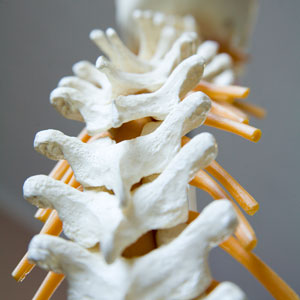 Welcome to Performance Chiropractic, a key resource for spinal health and wellness in the Greater Williamsburg area since 1979.
Welcome to Performance Chiropractic, a key resource for spinal health and wellness in the Greater Williamsburg area since 1979.
Driven by our passion for promoting overall well-being, we aim to provide you with valuable insights and practical tips to ensure your spine’s longevity. Your body is yours for a lifetime – let’s keep it in top shape!
Your Spine: An Intricate Framework
Your backbone is not simply one bone; it consists of a series of individual bones known as vertebrae. These vertebrae include 7 cervicals, 12 thoracics, 5 lumbars, and the sacrum and coccyx at the base. Between each set of vertebrae and below the lowest lumbar vertebra (L5), lies a special cushion of cartilage called the intervertebral disc. These remarkable discs, totaling 23 in number, play a pivotal role in absorbing and distributing the forces on your spine when walking, running, sitting, and standing.
Understanding Disc Degeneration and Its Consequences:
As we age, our intervertebral discs dehydrate (dry out, like the skin) and as they do so, they lose height. Initially comprising around 25% of your spine’s height during youth, the reduction in disc height can potentially cause problems including stiffness, injury, pain, and nerve interference. The diminishing space between vertebrae can lead to a condition called stenosis, where the narrowing irritates the spinal cord and/or nerve roots and surrounding tissues. In severe cases, these tissues may suffer permanent damage.
Unveiling the Disc’s Composition and Function:
The intervertebral disc resembles a jelly-filled donut, with an inner gelatinous core and a fibrous outer layer. The inner core is pressurized. The pressure varies based on your posture and the type of activity you engage in. For instance, lying down creates minimal disc pressure, while standing or sitting can increase the pressure by 2-5 times. Interestingly, lifting a weight of 20 kg (44 lb) while standing can raise the pressure by 10-20 times compared to resting. Running, golf and other rotational sports, jumping, and other rigorous activities greatly stress the spinal discs – which are designed to handle stress, when they’re healthy and surrounding joints move correctly. It’s crucial to be mindful of your lifting technique, maintaining good posture to minimize rotation or overstress. Holding a weight closer to your body, with minimum twisting, can significantly reduce disc stress as well.
Healthy Habits for Disc Maintenance:
Considering that discs are mostly water, maintaining proper hydration is vital for their health. Drinking plenty of fluids, particularly pure water, is an excellent choice to support disc hydration. Avoid or limit prolonged sitting – discs require motion to pump waste products out, and healthy fluid in. Furthermore, it’s essential to prioritize your overall health by adopting healthy lifestyle habits. One such habit is quitting smoking since smoking has been linked to decreased disc hydration. By keeping your discs well-hydrated, you decrease the likelihood of disc desiccation (drying out), reducing the risk of injury and preserving the health of your spine.
Diagnostic Techniques:
When it comes to evaluating the condition of your discs, X-rays can reveal the spaces between your spinal bones, indicating disc degeneration or hydration. It’s worth noting that disc herniations, such as bulging or torn discs, cannot be defined through X-rays alone. An MRI (Magnetic Resonance Image) provides more detailed information about the disc’s condition. However, it’s important to remember that the presence of disc abnormalities on imaging doesn’t necessarily mean you will experience symptoms. Many individuals without any symptoms may have common disc abnormalities on their MRI.
The Role of Chiropractic Care:
Chiropractic procedures offer effective ways to normalize joint movement, including the joints that guide disc motion. These procedures can also facilitate the delivery of vital nutrients to the discs, promoting their health and longevity. Consulting with a skilled chiropractor can not only address existing problems but also help minimize the risk of future disc-related issues. If you or a loved one are experiencing spinal disc problems or wish to prevent or minimize issues, seeking guidance from a chiropractor is a wise step towards comprehensive spinal care, better health, and optimal function.
Your spinal discs are essential components of your spine. They provide support, cushioning, and flexibility. By understanding their function and implementing healthy habits such as staying hydrated and using proper ergonomics, you can play an active role in caring for your discs. Additionally, chiropractic care offers valuable assistance in optimizing spinal health and addressing disc-related concerns. At Performance Chiropractic, we are dedicated to promoting the well-being of your spine and helping you achieve a life of vitality and pain-free movement.
